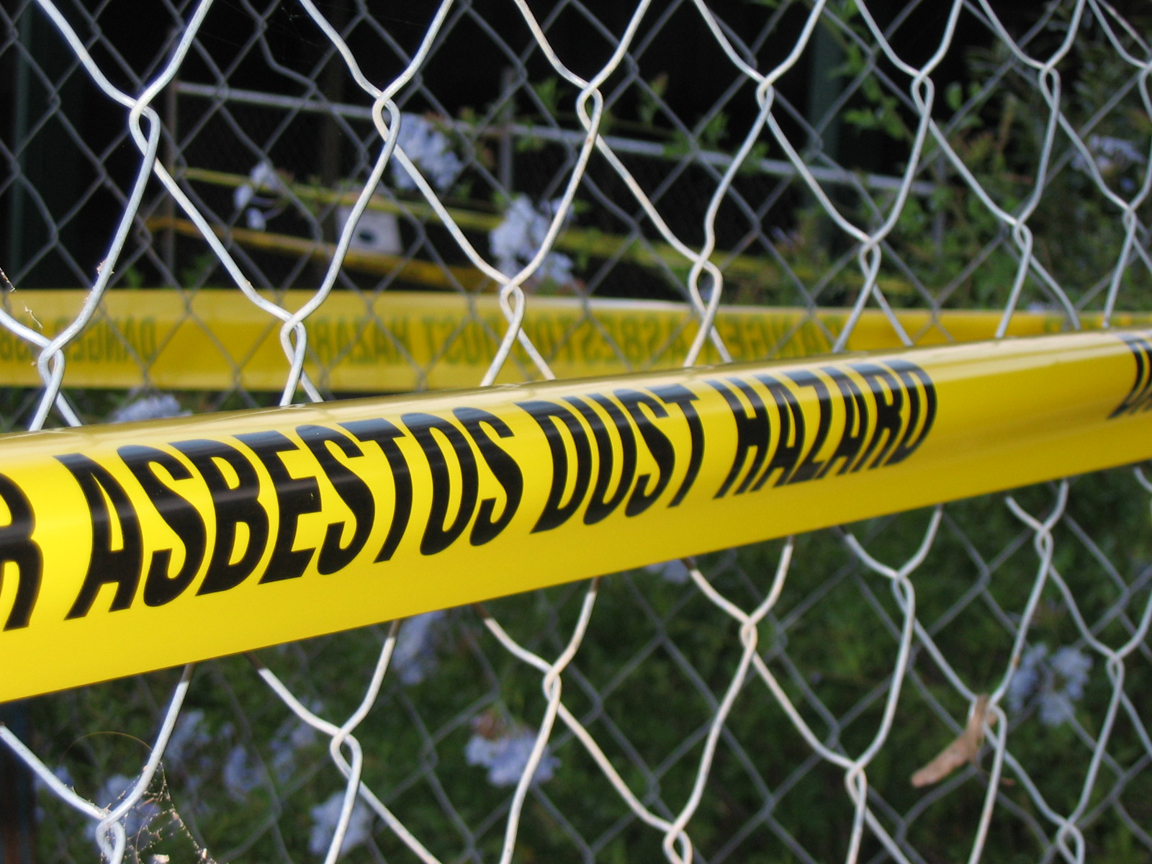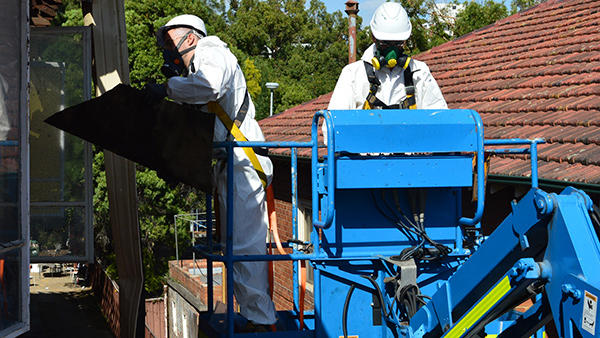Are you having difficulty in finding asbestos at your home? Then continue reading, because this article is just for you!
In the current world, asbestos-related mortalities are the second highest in Australia. Worrisome right? So what makes asbestos so harmful for us? Well, asbestos is made from fibre minerals that over a period of time turns toxic, causing harm to the human body in different ways. But don’t fear at all! Because in this article, we will be discussing how you can identify asbestos at home effectively. So put on your glasses and jump right in.
Things You Need to Know About Asbestos
Asbestos is most commonly found in those properties that were developed during the 1980s. This human toxic fibrous material was utilised by construction and building industries in the past for strengthening plastic and cement materials as well as for sound absorption, fireproofing, and insulation purposes. Although asbestos is still used during construction work, its utilisation has been significantly reduced as compared to the past. As who would like to live in a house that puts lives in danger. Right?
Asbestos is quite popular by the name of the “magic mineral”. The reason behind this is the unique features it possesses. The fibres in asbestos are quite flexible and soft, and still, they are heat, corrosion, and electricity resistant. This is solely why these toxic products were used so extensively in the past. Apart from this, asbestos acts as an active insulator as well.
If we talk about Australia, at least one-third of the real estate properties are found with asbestos materials. On the other hand, China, Kazakhstan, and Russia are considered as the main exporters of asbestos across the world.
So if you are planning to live a little longer, then we recommend that you should stay away from those places that involve asbestos.
Beware! Your Home Can Contain Asbestos
One of the most difficult and crucial tasks in this world is to identify asbestos at homes. That’s why, such tasks are assigned to professionals like building inspectors, property supervisors, and managers. So why it is so difficult to find asbestos? Well, the most common issue reported is the similarity of asbestos product, the construction materials and the unavailability of information regarding when these products were used and installed.
If you are living in a house that was built during the mid of the 20s, then there is a high probability that asbestos could be present at any nook or corner of your house. We are presenting here some common areas at your home that may consist asbestos. So let’s begin.
Insulation Area
The insulation in the home attics can be a major source of asbestos. In the past, the building professionals extensively build insulations out of vermiculite that incorporated asbestos fibres. Hence, these areas are considered highly contaminated, and we recommended not to disturb the insulation as it can harm your body. Instead, call an asbestos removal professional. They can surely save the day for you!
Ceilings
Watch out for your home ceilings, as asbestos is extensively found in these areas. This toxic mineral can be found near surfaces that are covered with textured paint or tiles. As the popcorn ceilings crafted from spray-on paints were quite popular in the 1980s, it is believed that they can also incorporate asbestos. So next time, be careful when you turn on your ceiling fan, the danger may come from anywhere.
Painted Interior Walls
In the past, asbestos was considered one of the major ingredients for creating paints. Hence, painting walls with asbestos paints, or scrapping old paints containing asbestos, can put the life of painter at great risk of harm because asbestos dust can easily enter your body during the painting process. So next time, when you buy paint for some fun activity, make sure that it does not contain asbestos in it. Or you could ask the seller to let you know if the paint contains asbestos or not.
Putty for Windows
Can you believe that even your windows are not safe from asbestos? As asbestos acts as a good insulator and a fire-resistant agent. Keeping these qualities in mind, the construction workers usually use putty (a material containing asbestos) to seal the areas around windows, in order to prevent homes from fire and cold winds. But sadly, they don’t know about the harm that these sealing products can cause later in your lives.
Wood Stoves & Fireplaces
To keep your home warm and cosy, people usually build wood-burning fireplaces or stoves in their houses. However, to protect these areas, asbestos paper, cement sheets, or millboard were most commonly used in the past. So we recommend that if you are still using that old fireplace at your house, then get it inspected before it’s too late.
Garden Sheds and Garages
You may never know that your old sheds and garages can be created from asbestos until now. These areas usually contain tiles and roof panels fitted on asbestos walls. Apart from this, your beautiful garage, where you work every now and then and fix your car, is also not safe from asbestos. This toxic product is extensively found in clutches, gaskets, and brakes. So next time, cover yourself properly before you fix your beloved vehicle.
Floors
The floor on which you are sitting or standing right now can also contain asbestos. So weird, right? Well, our homes or office floors are usually designed by vinyl tiles. For fixing these tiles properly, asbestos glue is used. In past, these tiles were considered easy to install, durable, and inexpensive, but poses a great threat for homeowners in the present if they are deteriorating and breaking down, or if they are scraped up, drilled, or sanded. So check your floors as well, and walk carefully.
Water Heater and Heating Ducts
The list does not end here folks. The insulation material used for water heater can contain asbestos as well, especially the insulating cloth and blankets. Similarly, for heating ducts, asbestos was considered as an important insulating agent in the past. Hence, no one will want to incorporate such water heaters and heating ducts at home that can harm our lives instead of providing us comfort.
We believe that we have provided quite a thorough list of different areas where you can find asbestos at your home. And we hope, that all your worries and problems will end after reading this section.

5 Simple Steps for Identifying Asbestos at Home
There is no doubt in the fact that identifying asbestos at homes can prove quite challenging because of the deteriorating condition and age of many construction materials used during the building process. Apart from this, the lack of visibility of the product numbers and brand names is another major factor that further makes this task challenging for the homeowners. But as the saying goes, there is no benefit in crying over spilt milk, as you cannot go in the past and change things for better. But you can change your present and your future. So in order to bring colours in your lives again, we have presented 5 simple steps for identifying asbestos at home.
Step 1: Check Your Home Interior
As discussed in the previous section, there can be various areas in your house where this toxic asbestos material can lie. So extensively search all these areas up to your maximum potential, and then follow the next step.
Step 2: Check the Material Date
Check the name of the product and the manufacturer labelled on the insulation. Once you got the name, you can search them on the internet and can check whether it incorporates asbestos or not.
Step 3: Scan the Code Given on Mould
Asbestos products can be moulded into different sizes and shapes in order to fill different compartments such as space between tiles, wall fillings, etc. Hence, every mould has a specific location on which manufacture information is printed or stamped. This information can prove quite beneficial as you can easily scan the stamp or printed material through your cell phone. Once you find it, look for the codes like AC or NT. AC means that the mould contains asbestos, while NT means your mould is asbestos-free.
Step 4: Take Out a Sample
If you want to deal with this harmful material on your own, then the best way is to collect a sample of those materials that you may think can contain asbestos in it. Once collected, you can send the sample to one of your nearby labs for testing. And if the results are negative, then congratulations your house is asbestos proof!
Step 5: Taking Help From Professional
Lastly, if nothing works out, then you can take help from a professional. They can surely solve your problem effectively and efficiently. These professionals usually have all the necessary machinery and equipment that can remove asbestos from your house quickly and at much lower rates while providing you with an effective, safe, and secure living environment just the way you always wanted.
So if you are also gripped with this issue, then follow these 5 simple steps, and live your life like never before!

How Asbestos Can Put Your Life in Danger
It has been known that the fibres present in asbestos cannot be destroyed easily. That’s why once it gets into your body it becomes quite hard to remove these fibres from body tissues or lungs. Here are three common types of diseases that occur when the human body comes in contact with asbestos material.
- Lung Cancer: This is the most common form of the disease that arises from asbestos exposure. It is believed that people who are associated with asbestos, milling, and mining-related works are at much higher risk of lung cancer as compared to the general population.
- Asbestosis: This is another serious, non-cancerous, chronic health disease caused due to the inhalation of asbestos fibres. Once these fibres enter the body they aggravate the tissues in the lungs causing deadly scars. Breath shortness and dry crackling noise from the lungs are some common symptoms of this disease.
- Mesothelioma: This is the rarest type of cancer that commonly occurs in the narrow membrane linings of the heart, abdomen, chest, or lungs. Usually, all the mesothelioma cases are linked with asbestos. Specifically, textile workers, miners, and asbestos manufacturers are at the highest risk of asbestos exposure.
So if you want to save your life and want to live it to the fullest, then get your house checked today!
What Can We Use Instead of Asbestos?
From the beginning of the 21st century, the construction industries around the world specifically in Australia has greatly avoided the use of the asbestos product during the building process. Here are some common substitutes of asbestos that can be used.
- Polyurethane Foam: This material is considered as one of the most effective and cheapest sources for insulation. Homebuilders can apply the polyurethane foam spray quite easily to insulate and seal different areas of the building.
- Cellulose Fibre: This binding agent is manufactured from shredded paper, linen, wood pulp, or cotton which is then treated chemically to enhance its characteristics. The cement containing cellulose fibre is considered as the most common alternative for high-temperature roofing, siding, and insulation.
- Amorphous Silica: This material is used for manufacturing a cloth woven high-quality fabric that can be used for heat proofing and insulation purposes. These fabrics neither burns nor decompose. Hence, they can be used in extensive applications.
- Thermo-sat Plastic Flour: This filling agent is made from binders and wood fibres such as gelatine or egg, which is finely ground and hardened. This material can be extensively used in adhesives and mouldable plastics.
Hence, all these products mentioned above are capable to provide the same benefits as asbestos, without putting any lives in danger.
Lastly, we anticipate that by crafting this article we are able to reduce some of your pain-stricken problems. And we hope, that through this article you will be able to solve all your home issues and bring the lost colours in your lives again.
For more information on our services, take a look at our webpage or request a free quote.
contact us today

